The first true German IFV
The Schützpanzerwagen Marder was the first modern IFV (Infantry Fighting Vehicle) of the Bundeswehr. West Germany in fact had some advance already in that type, having pioneered the Schützpanzerwagen "Lang" and "Kurz" from 1958 to provide the panzergrenadiers with a fitting replacement for the WW2 SdKfz 250 and 251. These light vehicles proved their worth in the early 1960s but had clear limitations. With the apparition of the Soviet BMP-1 in 1965 and its heavier armament, notably a low-power 75 mm main guns and antitank missiles, the Bundeswehr started to rethink its IFV and planned the future replacement of the older HS.30 and Schutzenpanzer Kurz 11-2. The general staff acquiesced a larger, better armed, protected, more modular IFV carrying more troops was needed and urged the development of a project of "heavy IFV" made to accompany the Leopard MBT in the field.The idea was also intended to create a whole armored infantry vehicle family, with a modular armament, ranging from AT rockets, to antitank mortars, medical armor, transport and supply, anti-aircraft (FlaRak) plus SPAAML. It was also intended for the Panzergrenadiere, which had their own way of fighting, leading to refine further the concept. In fact, two lines of development started, one of cannon-armed tank hunter and another of ATGM tank hunter separately. They were concluded successfully in 1967, leading to a vehicle retaking the name of a successful WW2 tank hunter.
Development history
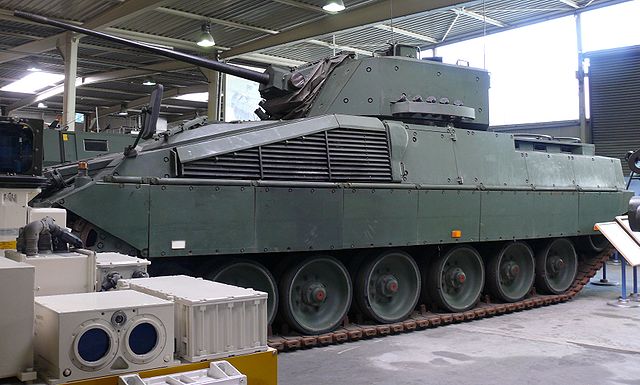
Marder 2 prototype.
The Marder original project started as early as September 1959 during the early phase of production of the HS 30. The aim was to develop an equivalent to the Leopard 1 armored infantry fighting vehicle in a renewed panzerdivision. The ATV staff (training, technique, experiments) of the Panzertruppenschule Munster created the military demands with the following characteristics:
- Increased crew of 12 men
- Better protection for the crew
- High mobility, driving range on par with the Leopard I
- A reliable 20mm rapid-fire autocannon
- Uncomplicated dismounted combat and support configuration
- NBC protection
Competition
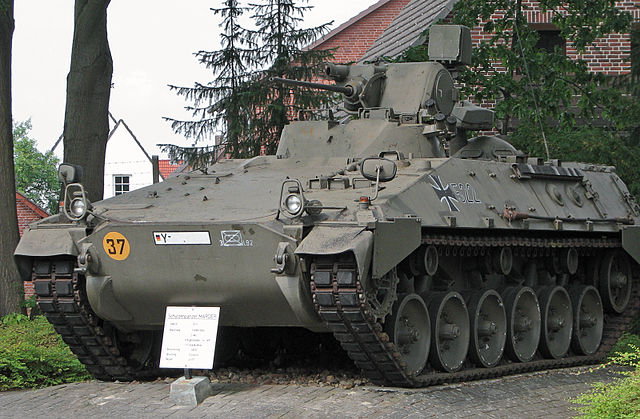
Marder 1 serie III prototype - Munster museum
In January 1960, the Rheinstahl group which comprised Rheinstahl-Witten, Hanomag, and an engineering office at Warnecke and Henschel AG (Thyssen Industrie AG at Kassel) were contacted as well as MOWAG to develop seven prototypes. Immediately Henschel presented a derivative of the HS.30, soon followed by the two groups using the same basic blueprint. These first generation prototypes were the RU 111, RU 112 and RU 122 (Rheinstahl), 1HK 2/1, 1HK 2/2 (Henschel) and HM 1/2 (MOWAG). They all respected the combat limit of 16 tons. Meawnhile, NATO started to be interested and made some proposals, as the US Army looking itsefl for a better armed replacement for the M113, which would eventually led to the development of the M2 Bradley. The one-time US-German partnership for a common armored infantry fighting vehicle failed, just as the MBT Kampfpanzer 70 program will (leading to the Abrams and Leopard 2).
After a serie of comparative tests with these early two-three prototypes in 1963, demands for a second generation led to redefine a new model about 20 tons. Rheinstahl built and sent the RU 214, 261,262 all larger, with front engine and upgraded features plus an 20mm automatocannon turret and ATGM. MOWAG brought forward the 2M1/1, 2M1/2 and 2M1/3, all with a mid-mounted transverse engine. New tests were performed this year, leading the staff to create new demands.
The 1964, the batch of third generation IFVs meant the vehicles has to be longer and wider, with rear-mounted MG and pistol ports for the infantry as well as better protection overall. But at least previous tests secured the solution of a combined one-man autoannon turret, with ATGMs. There were no changes at first, until it was asked to develop a two-man turret with a roof-mounted machine gun, whereas the main armament module remained the same.
In 1967, the fourth generation IFVs represented another combined batch of ten prototypes, extensively tested with troops in the field and in all conditions. MOWAG retired from the competition in 1968, no longer able to provide a satisfying ATGM solution. In 1969, a contract was awarded for the supply of 2,136 IFVs to Rheinstahl and the first production vehicle were scheduled for delivered on 7 May 1971. The Panzergrenadiere had their new IFV, a real step up compared to the earlier HS.30. For production, Rheinstahl AG and Maschinenbau Kiel (MaK) were both contracted and shared the burden of production. However reorganization of the German industries would led to the creation of a new group, Rheinmetall Landsysteme (now part of KNDS).
Initial Power Units: Perkins Diesel
The Perkins CV8 initially used for the prototypes was rated at 410 kW(550 bhp) and shared by the Alvis Vehicles Warrior IFV, coupled to the Perkins X300-4B cross-drive transmission and developing 100 bhp per cylinder and up to 150+ bhp.Design of the SpZ. Marder 1A1

Extract of the Marketing booklet

1A1 Technical Blueprint, general overview
General Hull design
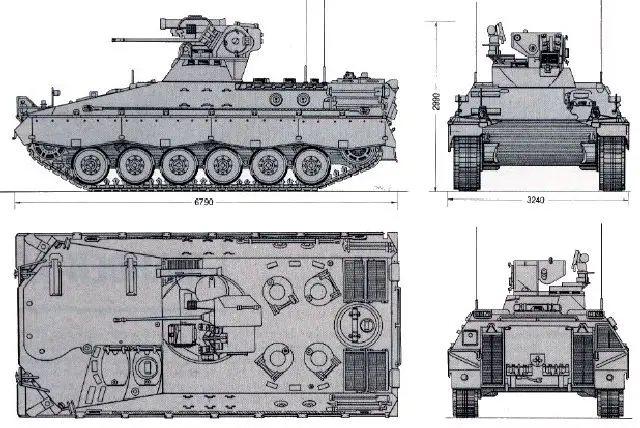
The Marder being larger than the previous SPz "Kurz" and "Lang" was the fact it reused much of the KWM Leopard I drivetrain, with just one less axle, and a less powerful powerplant. Its location was obvious since it was decided to make it an IFV: The standard at the time was for rapid boarding or exit via a back door, presenting less risk to enemy fire. This was adopted by all NATO APCs and IFVs at that point. From there, the only logical place for an engine was at the front, and in that case, front-left, with the extra space below the long glacis nose to house the Renk Transmission acting on the forward drive sprockets.
This left the right part of the nose free to place the driver and a single seat (later removed) behind, both in different heights due to the slope. Both had their own simple hatch, semi-circular and sliding to the right side. The driver had three periscopes angled to see the frontal arc, with the central one which could be replaced by an Infrared system for night driving, while the infantryman seated behind had a single day episcope.
At the rear, on the flat roof section was installed the main turret and its pannier. The basic model carried the 20mm Rheinmetall aucocannon, installed above the head of the gunner. It was assisted by optical systems and completed at the base of the turret by three vision blocks either sides. The troop compartment accomodates six infantry men, sitting back to back and facing outwards. It was modular enough for the troops to go from seated to standing position, or using the two ball mounts on either wall covering the sides.
When standing they emerged from three roof hatches, with the first two oriented inwards (folding outwards), with ring mounts to place various MGs on top, and a third one at the their back, center, but still oriented towards the left, folding back. In total seven took place at the rear in addition to the gunner, commander and driver. Since all could be dismounted, each vehicle carried a potential of ten fully equipped infantrymen. Later, the addition of the Milan obliged extra storage for the missile and the crew went down to 3+6 instead.
Protection
The hull was all in welded steel RHA intended to protect the crew all around againts small arms fire and shell fragments, so NATO STANAG-1, and it went up for the nose glacis, enabling protection on the frontal arc against 14.5 mm heavy machine guns fire (including AP shells) and up to 20 mm autocannon fire with the APDS DM43 or up to 25 mm APDS from 200 m (220 yd).The interior was protected against NBC threats, collective, with a slight overpressure system. There was a spall lining inside, and automatic fire extinguishers both in the fighting, troop compartment and engine's. For active concealement, the turret was equipped with two sets of three electric smoke dischargers. On the 1A3 versions, add-on spaced armour plates were installed permamently on each sides, There were also four large panels on each side, made of flexible armour protecting the top of the lower hull, at return roller level. The 1A3 also had the nose protection increased up to face 30mm APDS as fired by the BMP-2, and the development of top attack cluster bomblets later. This add-on armour was often filled with camouflage netting, various sacks and bags plus personal gear for the crew, active as "fillers". Tooling was strapped at the rear of the troop compartment.
Propulsion and performances
MTU MB 833 Diesel Power Unit
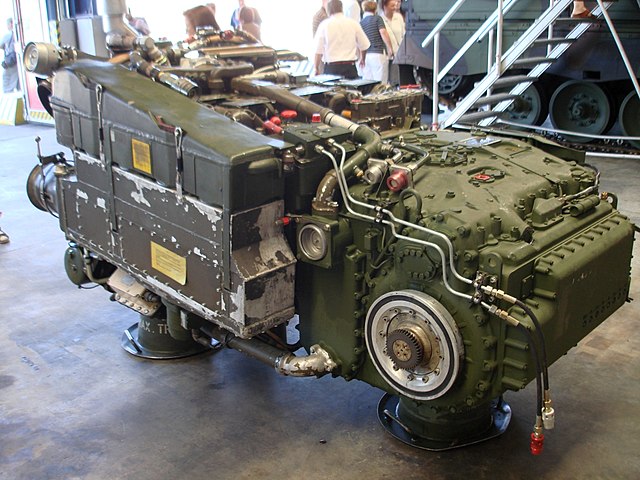
MTU Engine, waiting restoration
The beating hart of the Marder was its MTU MB 833 Ea-500 diesel engine src, rated for 441+ kW (591-600-720 hp). Manufactured by Motoren-und Turbinen-Union Friedrichshafen GmbH it was also used on the Roland SPAAG and Anders light tank prototype, its was shared by the Argentinian family comprising the TAM Main battle tank, TAM VCTP IFV, TH 301 Main battle tank, VCLC and VCTP. It was constantly upgraded over the years, booted to around 130 hp, to reach 720 on the 1A3/1A4.
Transmission by RENK Aktiengesellschaft
This unit was coupled with the transmission RENK HSWL 194. It was developed originally for the MARDER and stayed active for 30 years. It is also shared by the Roland 2. The HSWL 194 features:-Hydromechanical power shift
-Reversing and steering transmission
-Four gears forward and four reverse
-Operating fully and semi-automatically.
-Output shafts transverse to the input for entire unit removal or engine compnent connection.
-Propulsion drive with torque converter, lock-up clutch
-Shifting and reversing gear under load with planetary gear sets
-Multidisc brakes and clutches.
-Steering drive infinitely variable by hydrostatic-hydrodynamic superimposed steering system.
-Additional brake with hydrodynamic retarder
-Central oil supply with main reservoir, pumps, filters, valves and oil heat exchanger.
-Controls:
- Electric remote for gearshifting and reversing
- Mech/hydro actuated steering
- Mech actuating emergency backup drive (2nd Gear forward)
- Emergency Reverse backup.
This model was supersed by the HSWL 204 seen on the TAM tank and VCTP family (Henschel Wehrtechnik) manufactured in Argentina.
Suspensions
The Suspension is the same as for the Leopard 1, with the same roadwheels and torsion bars system. The drivetrain consisted of six doubled, ruberized roadwheels for medium links with inwards teeth and in two segments, the Diehl track fitted with optional rubber road pads (the base is made of semi-mild steel). The torsion bars below were completed by a set of six hydrostatic schock absorbers, which rotating base was at the left of each axle.Performances
Its top speed on road of the 1A2 was 75 km/h (47 mph) and max range just 520 km thanks to a standard tanl capacity of 652 L (172 US gal).Mobility wise, the vehicle was tested and proved able to gap a 2.5 meters wide trench, climb a one meter high obstacle, and ford 1.5 m without preparation, and 2.5 with preparation, with the trim vane erected and bilge pump activated. Various tests were done with inflatable "pontoons" all around in the 1980s. The kits were stored but never used. Due to its weight tactical mobility is limited to heavy lift jets such as the US C17 Globemaster, C5 Galaxy.
Armament
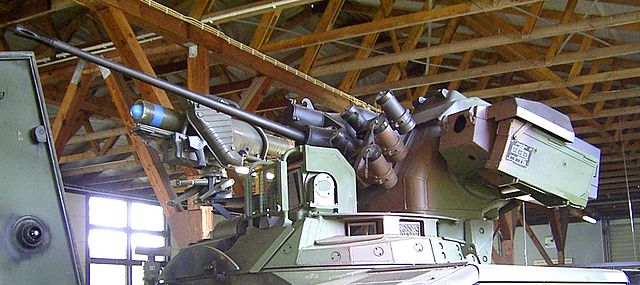
Marder turret detail.
The "Marten" was given a main two-man turret, far more complex and sophisticated than the half-turret used on the 1950s IFVs, like the HS.30 Lang. Although a one-man turret, it was well equipped and did not exposed the gunner at all. The latter was seated just at the level of the base, seiing through side angled vision blocks. The machine-gun mount, reload system and asociated gear, was above his head. He could see via an episcope, electrically linked to the main sight, equipped for night vision and fully stabilized.
Main Guns and MGs
The commander is seated on the right side, and the gunner on the left side of the turret. The commander is the only one provided with a side hatch, with eight day periscopes for all round observation. The the gunner has the same plus an additional three. The primary sighting system PERI-Z11 allows 2×-6× optical magnification. The 1A2 was given an additional thermal sight 2x-8x magnification. The turret could be fully traversed to 360 degree, elevating down to a comfortable −17 degrees and up to +65 degrees, enabling anti-helicopter fire, and tranversing at 40 degrees per second elevating at 60 degrees per second.Rheinmetall MK 20 Rh202 autocannon: This main armament can fire either AP (armour-piercing) or HE (High Explosive) HE rounds. 1,250 rounds total were carried. Developed originally as an AA gun its rate of fire is around 880 to 1,030 rpm cyclic, with a muzzle velocity of 1,044 m/s with HEI, 1,100 m/s with AP and effective range of 1,600 m against air targets, but up to 2,500 m against ground targets.
Coaxial MG3: There is a coaxial left 7.62 mm MG3 machine gun, which could fire tracers to help rapid targeting. In total, 5,000 rounds were carried for the MG3.
MG3 in RWS Pod: The first versions until the 1A2 also comprised a second MG3, mounted on the rear deck, in a remote controlled pod, which is typical of the Marder and was aldo adopted on its Argentinian equivalent.
Antitank Missiles (ATGM)
From the Marder 1A1A, the turret was fitted to support a tripod-mounted MILAN anti-tank guided missile launcher. It can be attached to the left of the turret, vastly expanding the vehicle's anti-armour capabilities. The Milan system is single-tube, so it could only fire once. Reloading exposes the crew, and typically, four missiles were carried inside the vehicle as spares. The MILAN in brief:- Using SACLOS wire guidance
- Range 200–2,000 m (660–6,560 ft)
- Range Milan ER: 3,000 m
- Missile speed 200 m/s (660 ft/s)
- Warhead Single or tandem HEAT, contact
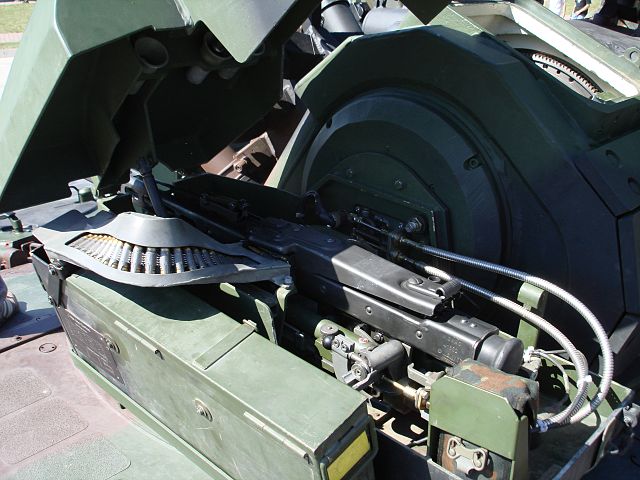
Turret MG3 machine gun.
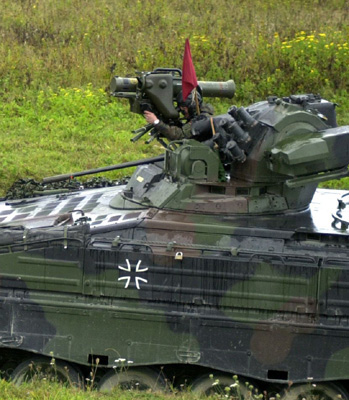
Marder 1A3 turret detail.

20 mm BK ammuntion.
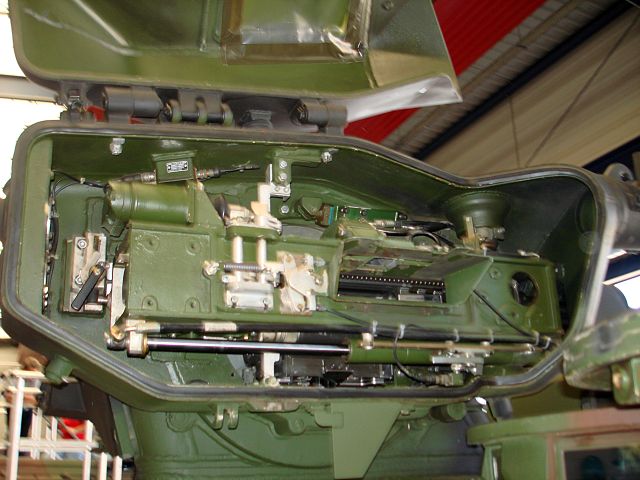
20 mm Kanone open magazine.
Production & upgrades by Rheinmetall Landsysteme

In the course of its service life, the Marder IFV was upgraded several times:
Marder 1A1+
In 1977-1979 all Marders were equipped with the MILAN ATGM, which could be used mounted or dismounted. Only four guided missiles were carried and the seated capacity dropped to six infantrymen. With an organic ventilation of the Antitank Marders within troop carriers, it worked well. After completion of the MILAN upgrade new improvements were implemented:-Installation of a double-belt feeder for the 20mm gun (enabling incendiary or APS ammunition).
-Incorporation of better passive optics, with residual light intensifier.
674 Marder 1 were upgraded to the new Marder A1(+) standard. However, some had a thermal detector added only. This was the "austere" upgrade (1A1(-), with 350 infantry fighting vehicles upgraded this way. They did not receive thermal imaging-based observation optics but modifications were made for quick retrofitting. The remaining 1112 Marder 1A1A were left as is and the conversion to both additional standards was completed in 1982.
Marder 1A2

In 1984-1989 another wave of upgrade allowed all vehicles to be modernized:
-1A1+ upgrades
-New thermal imaging device (WBG) for the gunner
-New radio equipment SEM 80/90
-MILAN infrared adapter (MIRA)
-Corner mirror washing system for the Driver.
Retrospectively all non-modified vehicles were denominated "Marder 1". While the designation of converted vehicles was now "Marder 1A2".
Marder 1A3
In 1989-1998 started the third major upgrade serie. It consisted in:-Armor protection upgrades
-Rear fighting compartment redesign:
The hull nose and rear roof section received better armor, with the hatch behind the driver removed, the hull roof reduced to three hatches.
The turret as its AA MG and thermal imaging device were also armored.
The additional armor was designed as shock-absorbing and comprised rubber elements.
-Additional stowage boxes added to the sides (no ball covers).
-Turret MG moved to the left side.
-More powerful 720 hp engine planned, but not installed due to budget cuts after the fall of USSR.
The entire conversion concerned a total of 2,097 IFVs under the name of "Marder 1A3".
Marder 1A4 (Commander Version)
Some were further converted with the installation of the crypto-enabled SEM 93 communication system, making them Panzergrenadier battalion commander vehicles. Their designation changed to Marder 1A4. There are no external differences however to the Marder 1A3.Marder 1A5
Modernization was performed by MAK SYSTEM GESELLSHAFT MBH. In 2001, the smoke grenade launcher was upgraded with rearranged throwing tubes and better controls to use all six. Only five were usable until then, one in danger of hitting the MG when fired. This was applied gradually in the 2000s without designation change.Howver by December 18, 2002, was announced the Marder 1A5 upgrade:
-Installation of mine protection against anti-tank and projectile-formed mines.
-Complete revision and redesign of the rear combat compartment
-New storage plan for the onboard equipment
-Revision of the engine cooling system
Marder 1A51
-New crew air conditioning system-ECM Jammer CG12
-Multispectral camouflage equipment
The overall weight rosed to 37.5 tonnes, and thus traduced into a loss of mobility. Rheinmetall delivered the first of 74 vehicles so converted to the Bundeswehr and they were the only ones used in external deployments of the Bundewerh like in Afghanistan or with UN missions. It was also given to army schools, starting in December 2010. Tests made with the jammer and Barracuda camouflage outfit with an heat transfer system showed it could radically increase survivability of the IFV. It was experimentally also tested with the 105mm Rh-105-30 main gun.
However as the MILAN F2 was phased out and with the delayed introduction of the Puma, its replacement, the Marder 1A5 and 1A5A1 received the new MELLS anti-tank weapon system, a multi-role capable light guided missile system destiined to the Puma and ended their careers with these. By August 2011, another 35 were brought the 1A5A1.
Marder 1A6
As part of a life service extension program of the Marder a new upgrade was planned FY2023:-Drive train replaced on 78 vehicles
-New engine rated for 750 hp (552 kW)
-More modern thermal imaging/target detection device
Rheinmetall is going to receive a total of 110 million euros for this modernization program as per the new massive budget voted in the Bundestag after the Invasion of Ukraine in the summer of 2022. This upgrade envelope is just a small fraction of the global 100 billions agreed total. So far only 350 Puma IFVs had been delivered, making the Marder the most common German IFV still today, although most are in reserve, not even upgraded to the 1A5 standard.
Other Variants
Marder 2 (Experimental) (1988)
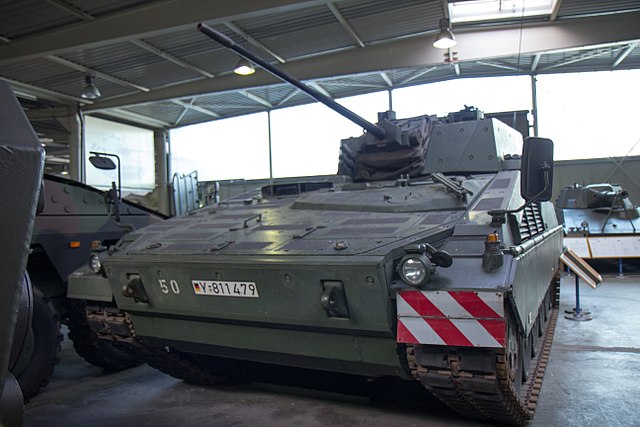
Versuchsträger VT 001 – Marder 2.
The Marder 2/Kampfwagen 90 was developed by Krauss-Maffei Wegmann GmbH & Co.KG (KMW, now part of KNDS) as a whole Modernization programm developed as the first of the West German Army KW 90 vehicles in the 1980s, the others being the PZH 2000 and a new tank. The Krauss Maffei Marder 2 won a competition in 1988, with two prototypes built. German Army requirements published in 1984 were to keep the same mobility as the Leopard 2, carry seven dismounted troops, having a main 35mm gun engagement of 2 km, fully stabilized and all-weather, day.night, plus a frontal protection against 30mm AP shells. The initial plan was to build 1,000 units from 1997 to 2001, but the reunification of Germany had this curtailed and eventually cancelled. The Marder 2 prototypes were ready for testing in 1991, but it never went far. Later the programme was completely reoriented with a full replacement, the Puma IFV. The Marder 2 weighted 40,600 tonnes, with a new 35 mm main gun, 1000 hp MTU engine, for a top speed on flat of 75 kph and 600 km road range.
Marder 30 (2010)
The Marder 30 was fitted with a E5 turret fitted wioth a new 30 mm Rheinmetall autocannon. In the E4 turret, a two-man turret with the commander and gunner accommodated next to each other. Close to the E8 version developed for the new Marder 2, the the E4 turret houses a fully stabilized 30 mm automatic cannon, with night vision and modern FCS. The rapid sensor/FCS targeting system making it able to Combat helicopters. It is capable of 360° surveillance and firing on the move by all weathers and with emergency mode capability by the commander.Marder M12 (2015)
Further development of the Marder 30, developed by KUKA Wehrtechnik GmbH it was fitted with the new Rheinmetall E4 turret, fitted with an autloader and same 30 mm Rheinmetall gun. Nothing came out of it.Airmatic's Fire fighting Marder (2008)
From about 2008, three old Marders were converted by the company Airmatic systems in Hemer into fire-fighting tanks (with and without extinguishing arm). The final result was presented at the Interschutz 2010. However Airmatic systems filled a bankrupcy in 2011, and the whereabouts of converted vehicles is unknown.Marder APC (2012)
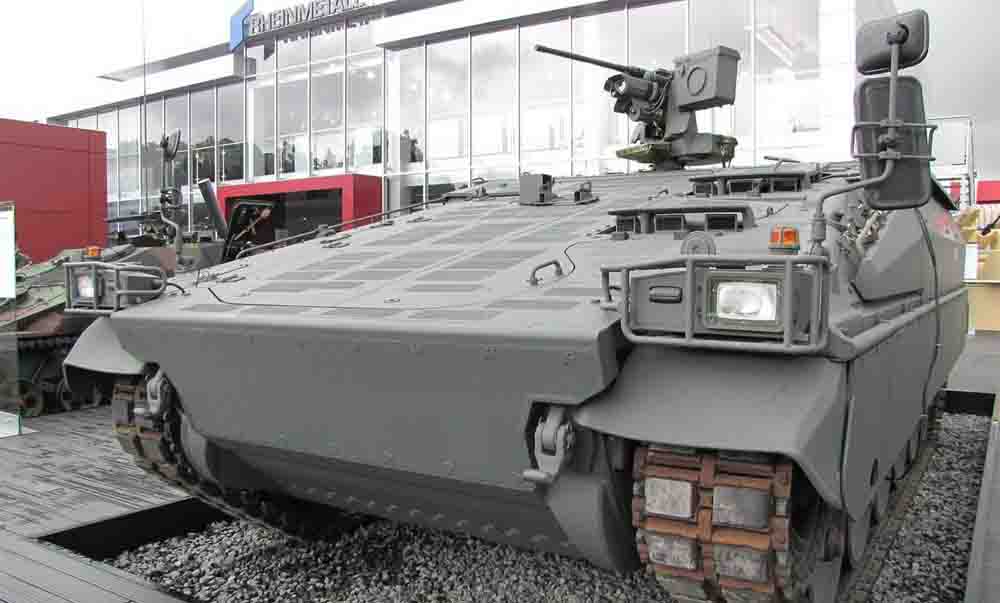
Auster development of the Marder intended for upgraded export, based on 1A3 stocks in the Bundeswehr inventory. The vehicle was presented as the final evolution of the Marder, built and marketed now as the Marder APC and the IFV and Light Tank versions under the label "Marder Revolution" by Rheinmetall Defence. Originally they were made to meet the demand of the Canadian Army, which needed 108 tracked IFVs in complement to its wheeled vehicles. No contract was signed and Rheinmetall turned to the export market, proposing this new model as a cheaper alternative to the Puma IFV. The APC is a 33 tons vehicle dharing the same mobility components and chassis. Most of the differences are in the new modular side armour, glacis front armor, RWS (for the APC).
The turret ring is super modular to receive three sized turrets. The internal rear troop compartment, higher and roomier, had been completely overhauled, is more modular and tailored for the troops to be on suspended seats, with extra bottom protection against mines and IEDs with dual floor shaped for deformation, resisting a 8 kgs TNT blast anywhere under the chassis. It's basic modular armor is made to resist 14.5 mm AP shells at all angles. The side armor has been upgraded to resist common RPGs. The interior as a spall liner, and APC features with full sealing and overpressure. An active protection system is available in option.
The APC (1st offer) Kongsberg M151 Protector Remote Weapon Station (RWS) operates a standard M2HB 12.7 mm heavy machine gun, stabilized, with IR projector and sixteen smoke projectors in four nests. The powerplant is now the MTU BM 883 Turbocharged Diesel (rated for 700 hp), coupled with a Renk automatic Transmission and reinforced suspension to cope with the added weight. Performances are about the same as before, albeite a bit degraded with top 70 kph on road and 500 km range. Like the old Marder it could climb 60% slopes. The thick electric rear door allow access to eight infantrymen, fully equipped. The rest is similar on the roof to the traditional Marder 1A5. Tests were done for a field conversion to an ambulance or command post. Video
Marder 105 (2012)
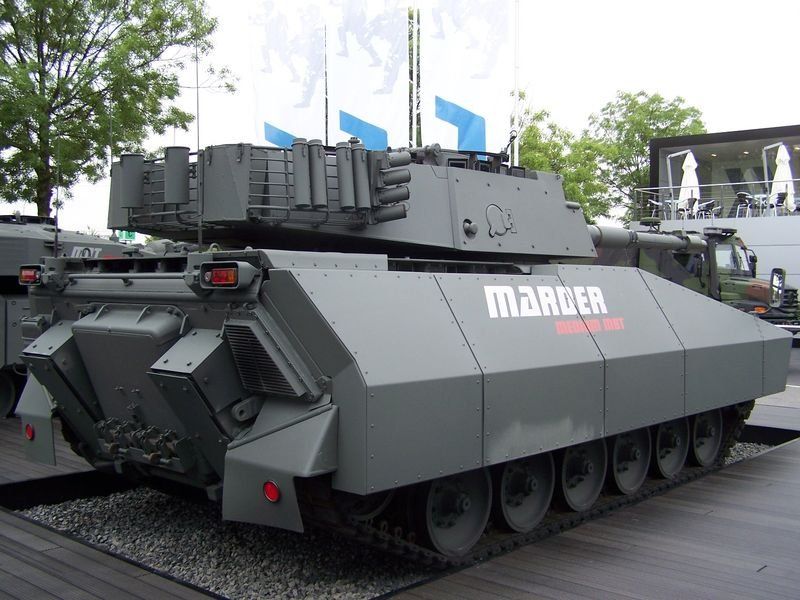
The "Revolution MBT" or "Marder 105" is the light tank version, presented at the same time as the APC with a new turret designed by OTO Melara, the three-man Leonardo Hitfact II, electrically stabilized, sporting a 105 mm/L52 gun. It led to the Marder Medium Tank RI (Republic of Indonesia) demonstrator showcased at IndoDefence 2016 in Jakarta. More. So far the 43 tonnes light tank had received no order.
The Marder in service





Brochure extract. 1A1 in summer and winter manoeuvers, different views, amphibious tests with preparation (bottom).

Mounted Infantry firing from the hatches and ports.
The Marder today and future plans
As of 2017, there were still 382 vehicles in the inventiry, but of which 319 are "available" in quick-readiness reserve, and 212 operational. It is not known in the context of the war in Ukraine if those in storage will be updated. 200 are undergoing upgrades based on the 1A6 standard in order to remain operational until 2025. 260 Marder are to receive a new thermal imaging system for gunner and commander and over 170 new drivers night vision sights were ordered, plus 71 vehicles undergoing engines upgrades in 2017-2019.However between the war with Russia, massive budget expansion of the Bundeswehr and limited number of Puma IFVs it's likely more would be converted quicker. In September 2022, Rheinmetall announced restored 16 Marder IFVs for Ukraine, but it does not have the government permission to export them. The other problem is having Ukrainian crews properly trained on a very different vehicle, a process that can take a year.
Exports
So far, the vehicle had to wait imminent replacement and the end of the cold war to be sold abroad, based on surplus. This concerned 100 1A3 to CHILE for a price of $46.600.000 by Febuary 2007, with deliveries ending in October 2011 at a $466,000 unit price. The second only export customer was Indonesia, with 42 vehicles upgraded to the latest 1A3 standard. This was part of a €216 million contract with KMW in 2012. Another customer was Jordan: Rheinmetall upgraded 25 Marder from surplus Bundeswehr stocks destined for the Jordanian armed forces. Deliveries started in 2018, booked in October 2017 at over €17 million. The total contract concernes twenty-five fully modernized Marder 1A3 with desert camouflage pattern and tropical options. They were delivered with spare parts, ammunition, tooling, doc and customer support on location plus a training package, both for the crews and maintenance teams. This made Jordan the third and last customer of the Marder.Marder 1A1 specifications |
|
| Dimensions | 6.79 m x 3.24 m x 2.98 m |
| Overall Weight | 28.5 t (1A1/A2) 33.5 t (1A3) 37.4 t (1A5) |
| Crew | 3+7 (driver, cdr, gunner, 7 infantry) |
| Propulsion | MTU MB 833 Ea-500 diesel engine 441 kW (591 hp) |
| Transmission | RENK HSWL 194 |
| Suspension | Torsion bars |
| Speed (road, 1A2) | 75 km/h (47 mph) |
| Range | 520 km () 652 L (172 US gal) |
| Armament | 20 mm MK 20 Rh 202, MILAN ATGM, 7.62 mm MG3 |
| Armor | VS. 20-25 mm protection () |
| Total production | Circa 2,136 1961-1975 |
Sources/Src
Links
http://www.panzerbaer.de/types/bw_spz_marder_1a5-a.htmhttps://www.zeit.de/politik/ausland/2016-12/jordanien-panzer-ursula-von-der-leyen-bollwerk-terror
https://en.wikipedia.org/wiki/List_of_modern_equipment_of_the_German_Army https://army-guide.com/eng/product989.html https://www.joint-forces.com/defence-equipment-news/14057-jordanian-marders-have-latest-thermal-imager
Books & others
Schrottreife „Marder“. - Der Spiegel. 5. August 2000.Verbesserter Schützenpanzer MARDER ausgeliefert. In: bwb.org.
Rheinmetall integriert Panzerabwehrlenkflugkörper MELLS in Schützenpanzer Marder. In: Pressebox.de. abgerufen am 21. März 2018.
Siehe Bild am Artikelanfang.
Strategiewechsel: Mit dem „Marder“ in die Offensive
Afghanistan: Deutsche Patrouille nahe Kundus beschossen, 21. Feb. 2011.
Marcel Bohnert & Andy Neumann: Panzergrenadiere im Kampfeinsatz in Afghanistan
Videos
https://youtu.be/a7QZoNy0Snc https://www.youtube.com/watch?v=18JSH0et1rs https://youtu.be/0s6Gehf4fMYModel kits
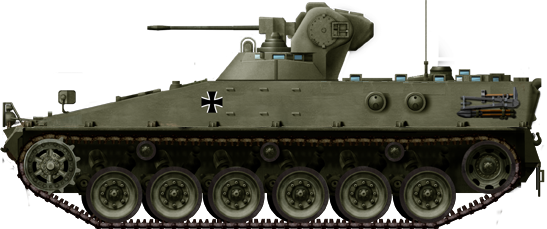
Prototype of the Marder
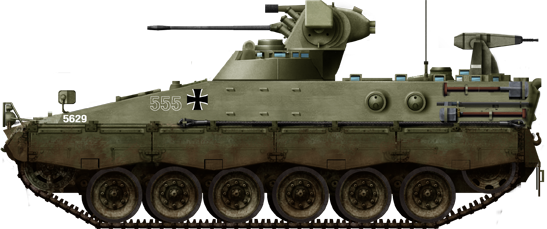
Marder of the preserie in 1980
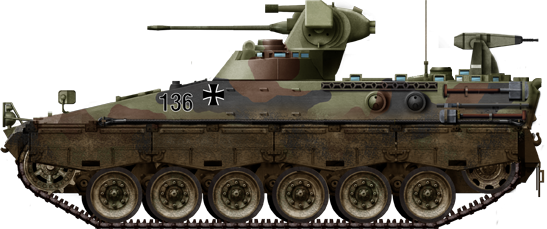
Marder 1A1
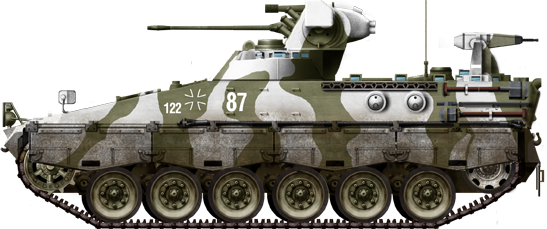
Marder 1A1 in winter manoeuvers, 1985
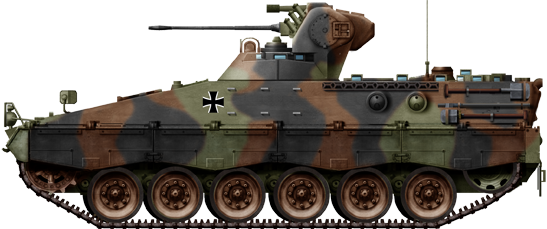
Marder 1A2
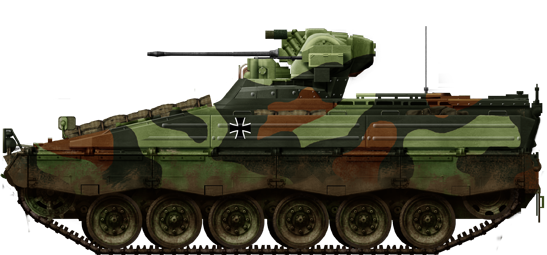
Marder 1A3
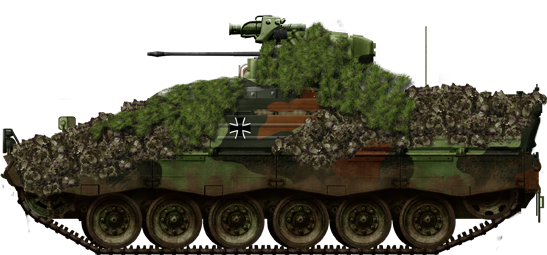
Marder 1A3 with MILAN
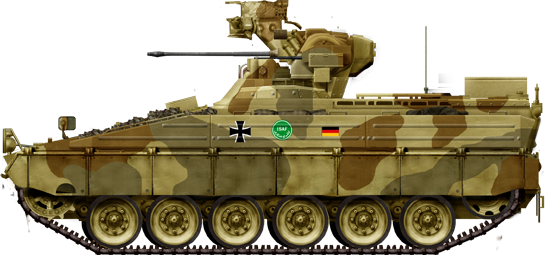
Marder 1A5 ISAF Afghanistan
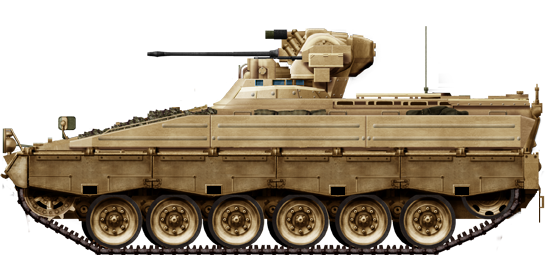
Marder 1A5 Jordan Army 2018
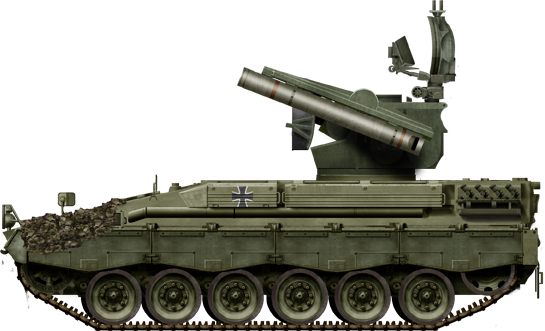
Flugabwehrpanzer Roland SPAAML
Gallery
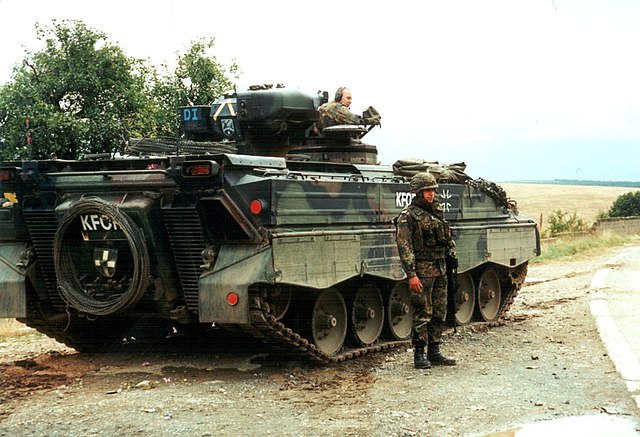
Marder 1A2 in Kosovo, 1999.
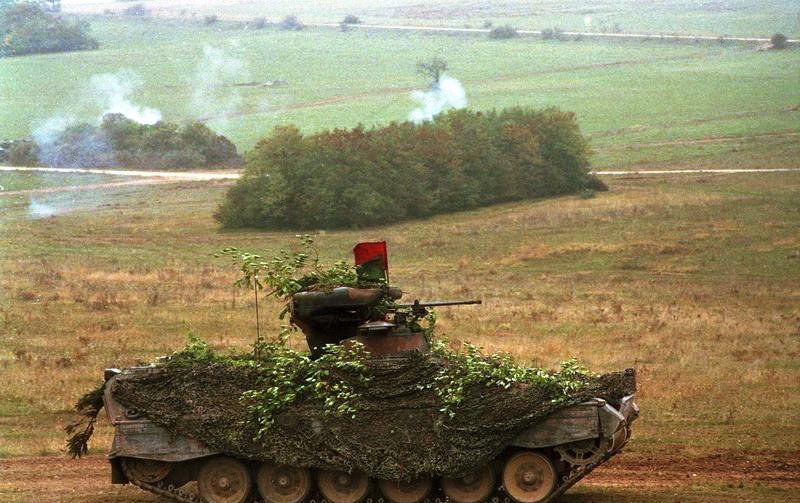
Marder 1A2 in manoeuvers.
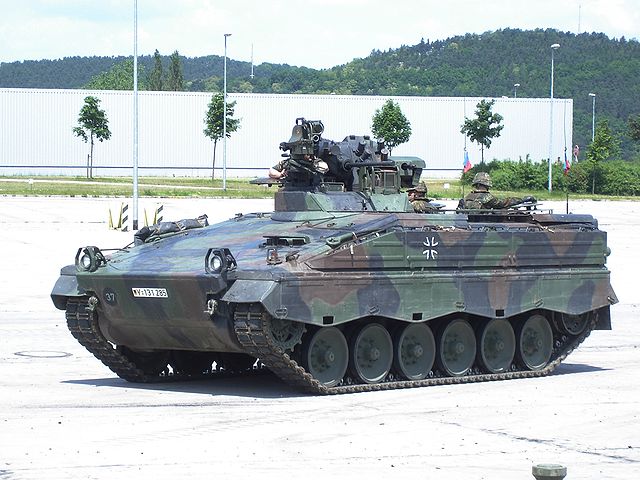
Marder 1A3.
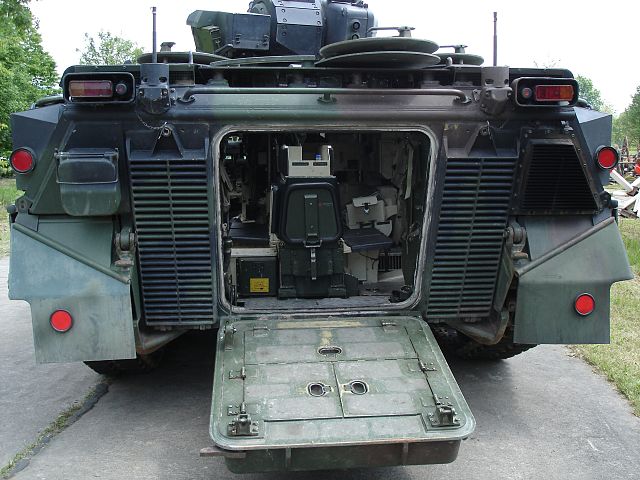
Marder 1A3 rear open bay
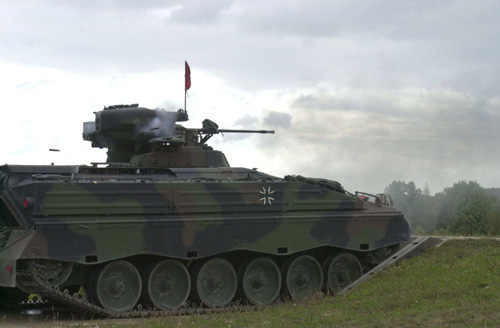
Marder 1A3 firing.
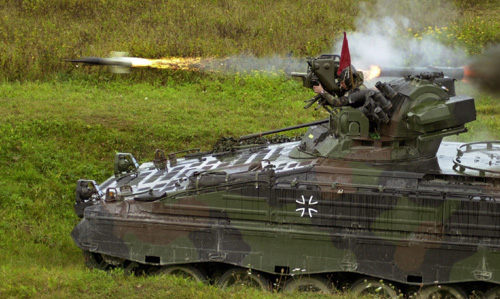
Marder 1A3 firing a Milan.
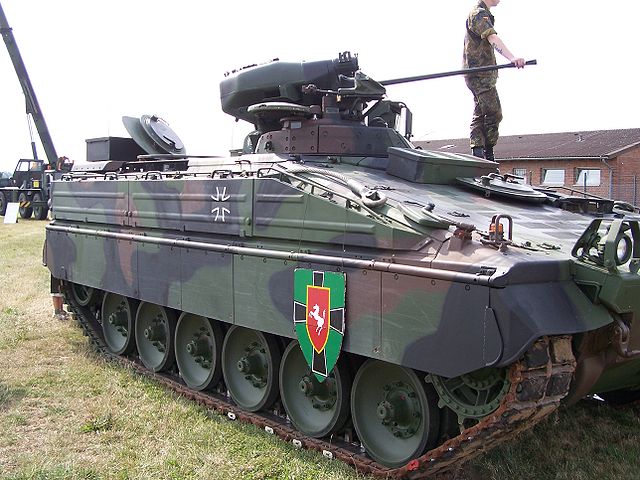
Marder 1A5
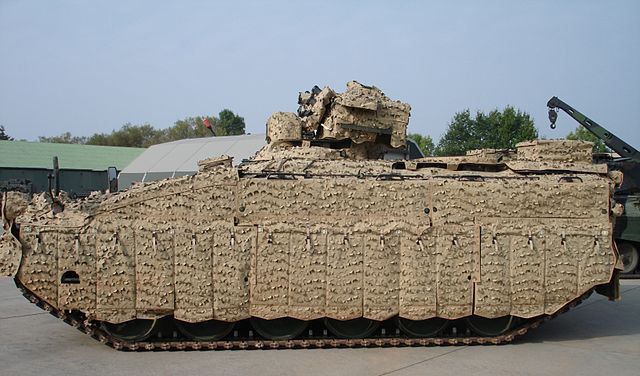
Marder 1A5 with the Barracuda camouflage

Cold War Tanks


































Cold war tanks posters

Cold War Main Battle Tanks

Cold War Soviet Army
Museums, Movies, Books & Games
The Tanks and Armor in pop culture
Tanks and armored vehicles in general are only really grasped when seen first person: The mass, the scale, it's all there. Explore also the way tanks were covered in the movie industry, in books and in video games.Movies:
Best tanks movie on warhistoryonline.com
On imdb.com
On bestsimilar.com/
miltours.com
liveabout.com/
watchmojo.com
Video Games:
pcgamesn.com
historyhit.com
levvvel.com
vg247.com/best-tank-games
mmobomb.com/
alienwarearena.com

